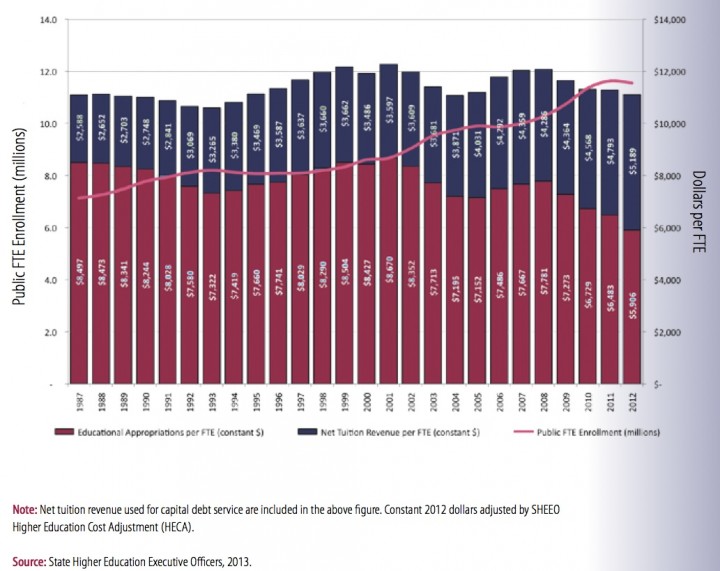If I appear a bit concerned about the funding of public universities, well, I am. Earlier this summer the American Association of State Colleges and Universities made it clear I’m not alone. The title of their report speaks for itself: Creating a New Compact Between States and Public Higher Education. As they say in Spanish, “mal de muchos, consuelo de tontos” (roughly meaning “many in distress makes the fool’s sorrow less”)
The infographic in the report shows how the public compact has flipped over the last 25 years. As I showed earlier on this blog, the trend at Mason has been even more acute. While the collective finger these days tends to be pointed at colleges in trying to explain the ever rising tuition trends, the truth is that we, as a society, have decided to gradually shift public funding from higher education to other priorities, thus turning what we once considered as mostly a public good into a somewhat subsidized yet mostly private good.
A second chart in the AASCU report further sums up the trends.

The solution according to AASCU (or at least a path towards finding a solution) requires commitments from both state lawmakers and universities. These ideas may be quite timely in Virginia, given ongoing public policy debates in the context of the November gubernatorial election.
Here’s what AASCU would like policymakers to commit to:
– Provide sufficient, consistent and sustained state funding
– Recognize the fundamental mission of state universities and develop a shared, collaborative agenda with them
– Do not over-regulate or constrain institutional flexibility
And here’s what colleges should commit to:
– Demonstrate accountability and communicate efforts to increase student success and cost containment
– Align institutional plans and outcomes with state goals
– Partner with governors and legislative leaders, inform and educate them on realities of higher ed, and be informed and educated about their goals and agendas
I’m game.

